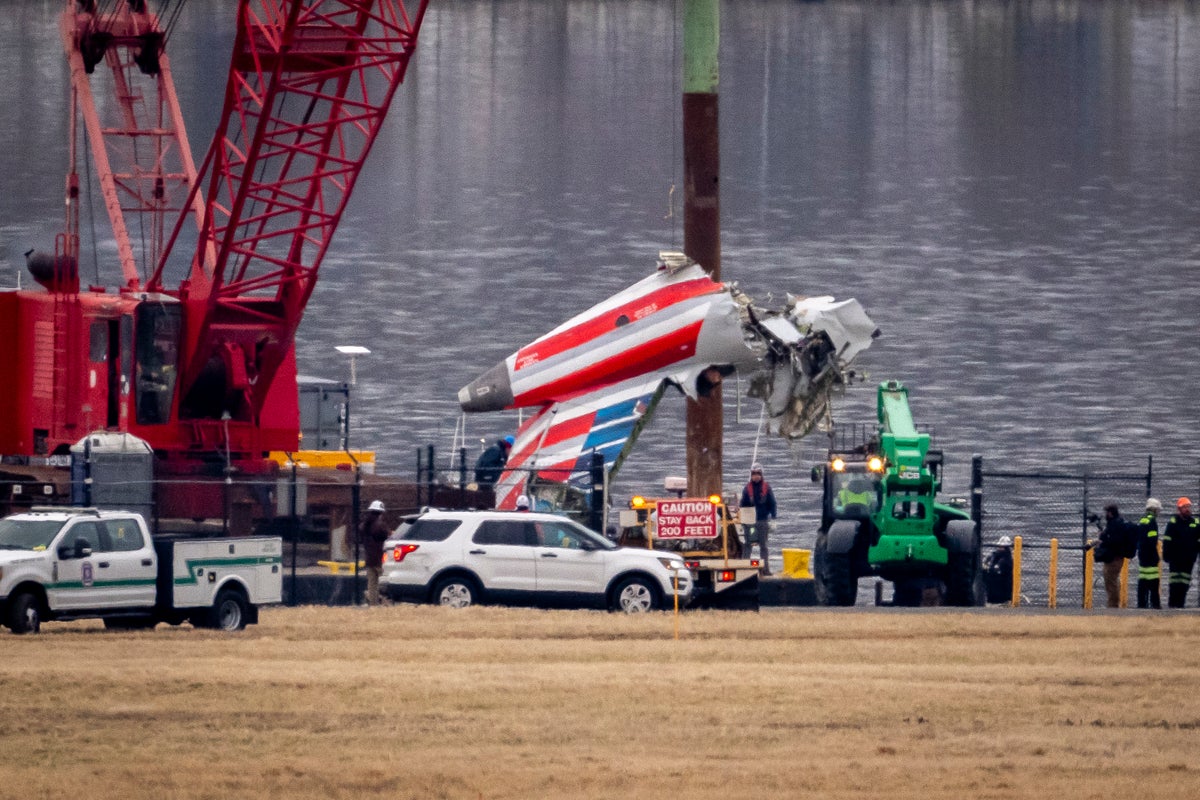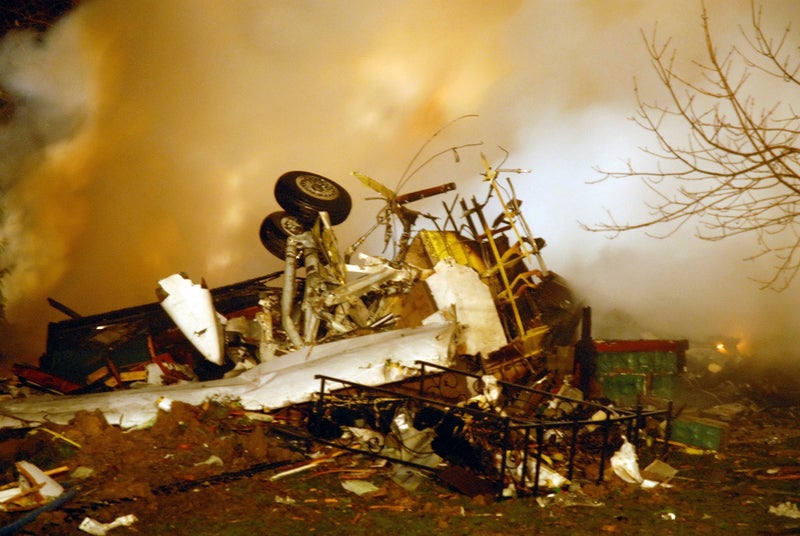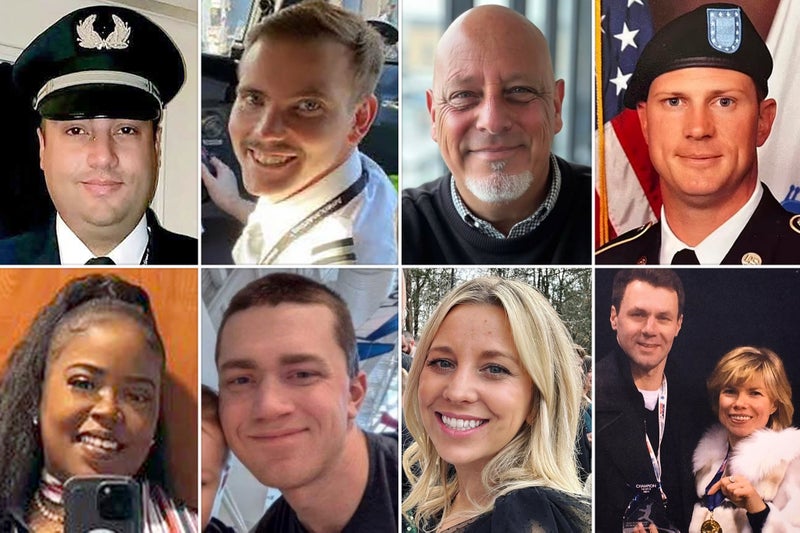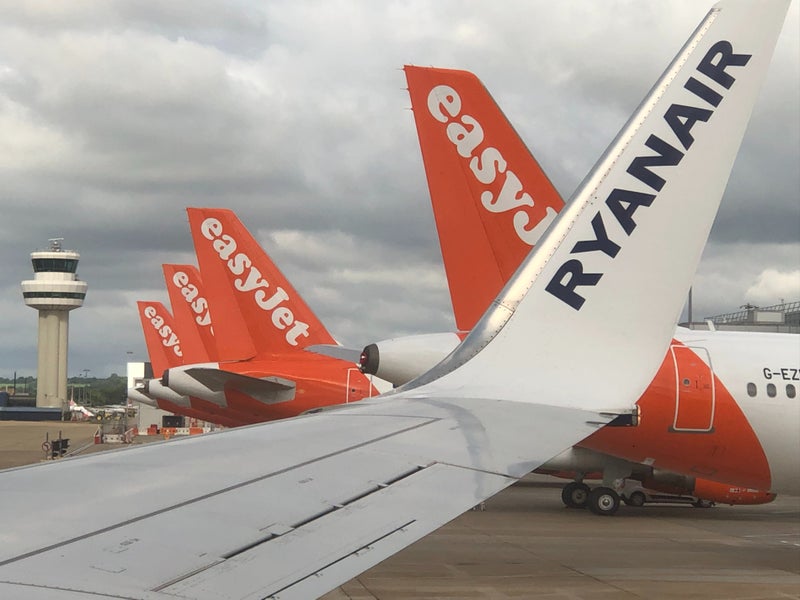To view this video please enable JavaScript, and consider upgrading to a web browser that supports HTML5 video. Up Next. High-profile plane crashes have cast a shadow over the aviation industry since the start of 2025 — and speculation is swirling around the cause of the incidents. Monday’s Delta Airlines crash at Toronto Pearson International Airport is the latest in a series of accidents that have sparked widespread anxiety and raised questions over the safety of air travel.
![[Piece of aircraft wreckage being recovered in the Potomac River, Washington, after the plane and helicopter crash.]](https://metro.co.uk/wp-content/uploads/2025/02/SEI_238341528-8be8-e1739886354158.jpg?quality=90&strip=all&w=646)
Four major aviation disasters have occurred this year, claiming the lives of at least 85 people in the space of two weeks. On January 29, an American Airlines jet and a US Army helicopter collided in the air over Washington DC. Two days later, a medical jet carrying six people including a sick child nosedived into a residential street in Philadelphia. Subsequent crashes took place in Alaska and Arizona, and fears are now rising that flying is no longer the safest way to get around.
![[A piece of the airplane wreckage in Potomac River after the Washington DC American Airlines and Black Hawk helicopter crash.]](https://metro.co.uk/wp-content/uploads/2025/02/SEI_237996267-0c2c.jpg?quality=90&strip=all&w=646)
Has the industry been hit by bad luck in 2025, or is there more to the recent aviation disasters?. While there have been multiple major crashes in January and February alone, aviation experts insist that flying remains ‘incredibly safe.’. Here is a round-up of the main concerns after the recent spate of plane crashes:. An investigation is continuing into the Washington DC disaster, which saw an American Airlines plane and a US Army helicopter crash mid-air near Reagan National Airport, killing all 67 passengers and crew.
![[The Delta Airlines plane that flipped over at Toronto Pearson Airport runway, Canada.]](https://metro.co.uk/wp-content/uploads/2025/02/SEI_240371184-5596.jpg?quality=90&strip=all&w=646)
Rumours focused on the Air Traffic Control tower staffing levels, fuelled by President Donald Trump’s accusations against the Federal Aviation Administration (FAA). Trump suggested that the FAA’s equality and diversity policies were to blame for the crash. At the time of the Washington crash, one controller was reportedly handling both commercial airline and helicopter traffic at Reagan National Airport, which some are claiming was ‘not normal.’.
![[An emergency scene around the Delta Airlines plane at Toronto Pearson Airport.]](https://metro.co.uk/wp-content/uploads/2025/02/SEI_240397111-e798.jpg?quality=90&strip=all&w=646)
One ATC source has said this can be normal practice when covering for breaks or lunches, according to ABC News. Simon Miles, the founder of Miles Aviation Consultancy, said that airspace around Washington DC airport is ‘both complex and extremely busy, especially during peak hours.’. He said that while most staff rosters include contingencies for unplanned or unforeseen events ‘any shortfall in staffing will inevitably place extreme pressure on the remaining personnel.’.
![[An aerial image of the Delta Airlines plane that landed at Toronto Pearson Airport and flipped around.]](https://metro.co.uk/wp-content/uploads/2025/02/SEI_240435593-35be.jpg?quality=90&strip=all&w=646)
Bernard Lavelle, an aviation consultant with BL Aviation Consulting, told Metro previously that there is a ‘shortage of ATC staff in the US’ along with shortage of pilots. ‘They have tried to step up recruitment. But recruitments is one thing, training them is another and it takes time,’ he said. US Air Traffic Controllers have reportedly been under stress for years. Mr Miles said that human factors play a ‘crucial role in aviation safety’ and that the impact of ‘high workloads on individuals is well documented.’.
Federal officials have warned of understaffing due to uncompetitive pay, long shifts, intensive training and mandatory retirements. Now, the Trump government has started firing FAA employees in the aftermath of the crash and taking aim at the agency which regulates civil aviation and air traffic. Hundreds of FAA employees were told on Friday that they were fired. An air traffic controller, who wished to remain anonymous, told AP that the firing spree includes staff for FAA radar, and landing and navigational maintenance.
Transportation Secretary Sean Duffy insisted on Monday that ‘zero air traffic controllers and critical safety personnel were let go.’. Mr Miles said that ‘there is rarely one single reason why accidents occur’ and aviation safety relies on a ‘layered system’ to prevent accidents. One potential cause could be human error, whether in the air traffic control or within the aircraft. The cause of the Washington crash remains a mystery, although the black box was recovered in the days following the crash.
New information has now emerged suggesting that the helicopter pilots, who were on a doomsday training mission, may have had mistaken data about their flight altitude. Jennifer Homendy, chairman of the National Transportation Safety Board (NTSB), said that the crew could have had ‘bad data.’. The NTS said one Black Hawk helicopter pilot thought they were flying at 400 feet while the other thought they were at 300 feet, according to ABC News.
‘We are looking at the possibility of there may be bad data,’ Homendy said. On recordings from the ATC tower in the moments leading up to the disaster, the ATC tower can be heard trying to make contact with the chopper pilots who appear to fail to answer. The Washington tragedy was followed by a dramatic crash at Canada’s Toronto Pearson Airport when a Delta Airlines flight crashed and flipped around on the runway yesterday.






























